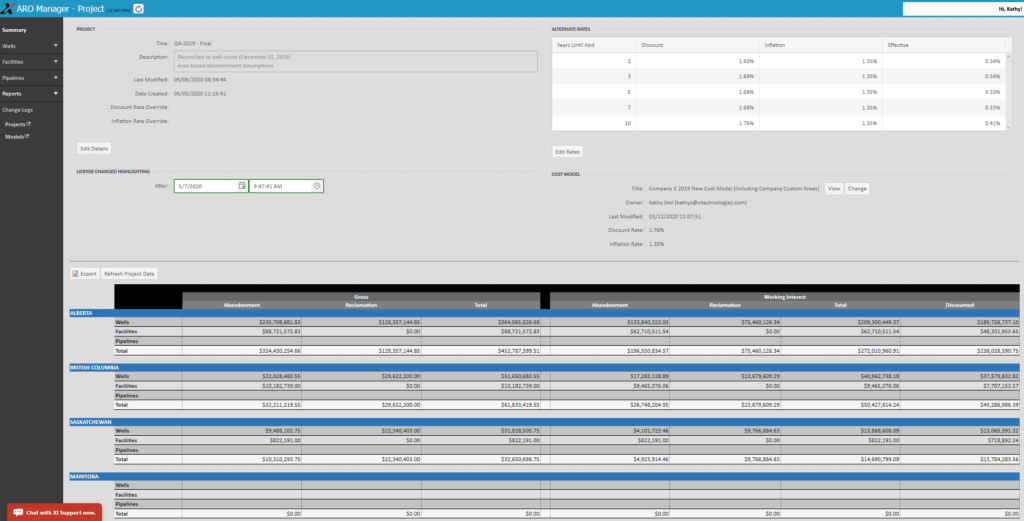The Problem with Spreadsheets for ARO Management
March 17, 2022

Spreadsheets are easy-to-use, highly customizable, and come at no additional cost to most companies, so it is easy to see why they have become the default tool of choice for maintaining asset retirement obligations (ARO). However, as end-of-life closure activities and obligations have grown in importance and complexity, managing an ARO program through spreadsheets comes at a hidden cost. The initial benefits of spreadsheets – flexibility, familiarity, and affordability – can’t overcome the challenges posed by utilizing a tool never made for this job.
Excel Wizards out there can create remarkable spreadsheets custom-tailored to meet their needs. The issue is that spreadsheets are just that – personal productivity tools, not mission-critical applications to be used across departments of a company. If a company intends to share these spreadsheets with multiple departments, how do they then track changes for audit purposes? Do they know when a formula gets corrupted or broken? When does the sheet stop functioning as one person’s personal tracking system to a full corporate-wide report?
We frequently hear horror stories from companies who have outgrown their spreadsheets, for example:
- “Things got too complicated” – Simple worksheets originally built to manage at-the-time basic End of Life reporting needs grew into difficult, overblown monsters of dozens of tabs, and fragile nested formulas. Merged and acquired companies became impossible to fit into the legacy structure and had to be managed independently.
- “We had to call in IT” – As file sizes bloated, spreadsheets became more difficult to load, slow to respond, and more prone to crashes.
- “I lost my wizard” – Reliance on a single ARO Excel expert meant that when our Excel expert moved on from their role, we had to start from scratch getting someone else up to speed.
- “We wasted so much time on errors” – From simple data entry errors to broken formulas, we constantly had to do something over because something in the worksheet broke. Finding the formula break was always a long and painful process.
- “I’m always being asked for reports” – We usually sigh with relief when the task of year-end ARO reporting is done. But banks, investors, and executives are all insisting on more transparency, reporting, and planning when it comes to end-of-life obligations. This is not easy to do with our unwieldy spreadsheets.
- “I need a better audit trail” – Managing critical data with spreadsheets means not having an automated log of who made what changes to reports. Anyone who has access to the document can make changes without anyone else knowing.
- “Updating is so manual” – Every quarter the data needs to be refreshed with all changes to the licenses. Pulling this data is complex and time-consuming.
When you factor in the time spent managing the seven issues above, spreadsheets start to become a lot less cost-effective than they initially appear. Companies need a more standardized approach that can be easily used, shared, and reported from by anyone throughout the organization. There is significant efficiency and protection that comes from a fully auditable, cloud-based solution.
Moving away from spreadsheets to AssetBook ARO Manager ended these problems for our clients. ARO Manager was purpose-built for the oil and gas industry, developed through a culmination of government resources, expert opinion, and industry data.

ARO Manager directly addresses the problems with spreadsheets by providing:
- Routine software updates to meet changing needs and regulations – eliminating the need for an Excel wizard to build new functionality into a spreadsheet.
- Web-based platform that requires no IT intervention or database management.
- Simplified ARO process – users get the columns and data they need without having to be a spreadsheet wizard.
- Shared experience across departments, with everyone working from the same live file with real-time information for analysis and decision-making.
- Enhanced scenario analysis – easily substitute cost models, adjust inflation or discount rates, apply discounts for ABC programs, and more.
- SOC compliant process that tracks all changes to satisfy auditors.
You can read more about the various struggles our clients have had with their ARO spreadsheets, including dedicated hardware solutions and “the Rainbow Unicorn Spreadsheet of Barf” by reading our case study “The Problem with Spreadsheets in ARO Management” or contact us for a demo.
Join us on Tuesday, March 29th at 11:00 for a webinar that discusses many of the issues our clients have had managing their ARO with spreadsheets and how ARO Manager made their jobs easier. Click here to register.
